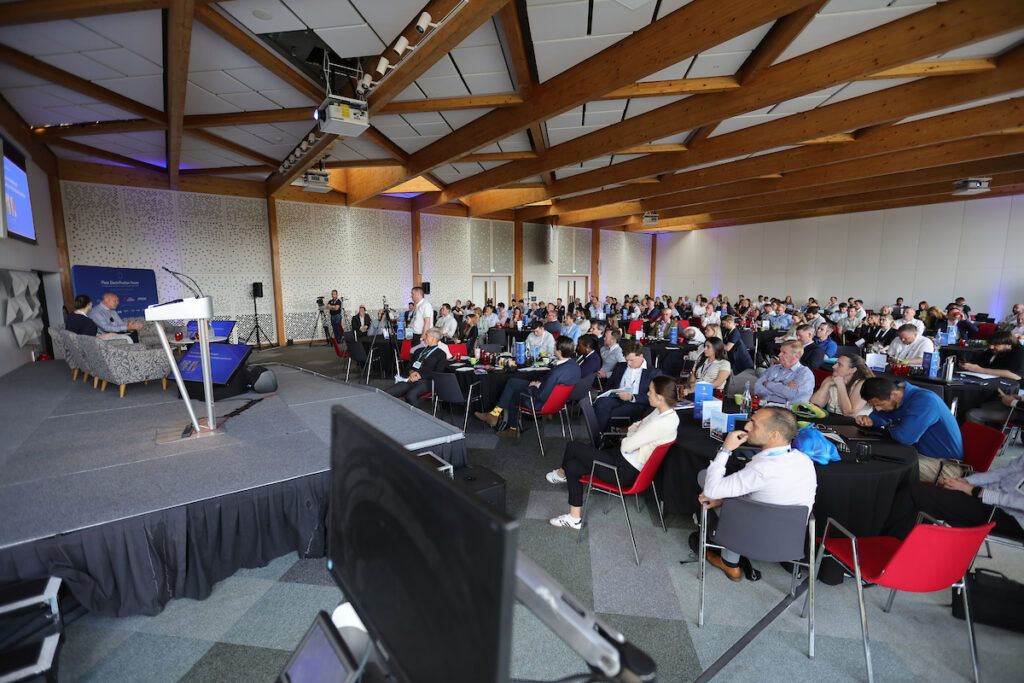Fully Charged Korea correspondent DK takes a look around Hyundai’s latest one-off concept, the Grandeur EV. Is there a future for retro-futuristic designs like these? Will they ever find their way to production? Check out the video to find out and read Jack Scarlett’s blog below.
Did you know that car designers hate the word retro? On two separate occasions I’ve been at press events for new cars where a journalist has used it as a descriptor and, on both occasions, I’ve watched the nostrils of the person responsible for penning the design flare so wide you could easily slot a tennis ball into each. To them, it’s a dirty word.
As far as I understand it, their beef with ’retro’ is the implicit suggestion that their work dwells on the past and lazily relies on old, proven tricks instead of looking forwards and pushing new boundaries, as good design should. You can certainly borrow from your past – there’d be no continuity in brand design otherwise – but you must always do so with a fresh spin.
I will therefore try very hard not to use the ‘R word’ when describing Hyundai’s latest design study, the Grandeur EV. Instead I will simply say that it’s one of the coolest electric cars I have ever seen.
The concept marries the boxy silhouette of one of Korea’s most iconic vehicles (you’re forgiven if you’ve not heard of the Grandeur before but in Asia it’s absolutely legendary) to the pixelated design cues and technology of the brilliant Ioniq 5. The result is a menacing sedan with more road presence than just about any new EV on the road today. But I shall leave the specifics of the design to our Korea correspondent DK, who goes through them in extensive detail in the video, and instead use this blog to highlight an overlooked upside to our electric future which this concept highlights: increased freedom in design.
Why is that then? Put simply, it’s because when all the batteries, motors and gubbins are neatly stored in a skateboard-like platform, there are virtually no constraints on what shape you decide to plop on top of it. There are a few factors still to consider of course. Space for occupants is rather important. Space for their things too. And then there’s aerodynamics: the slipperier the silhouette, the less energy required for it to punch through the air, the better your range will be (that said, if you’re set on designing something classically boxy like the Grandeur, its barn door-like drag coefficient can be compensated for by an ample battery and efficient, modest motor). But as far as non-negotiables, that’s about it.
What I’m trying to say is I think we can expect a more assorted variety of shapes and sizes of cars in the coming years, as designers begin to really exploit this new creative freedom that EV architecture affords. Indeed Hyundai itself has stated that each of its Ioniq cars will have a design language entirely of its own, snubbing the cookie-cutter approach that most brands have always taken, where all models in the lineup are visibly related to each other. This is perhaps not just a reflection of the freedom electric power has gifted designers, but also a suggestion that the use of a shared, modular platform is affording brands more time to think about this stuff. When the hardware under the skin is largely the same across all models, you get more of a chance to tinker with the packaging, right? I’m speculating now, but it makes sense. In any case, be excited: the electric future doesn’t mean we’ll all be driving around in samey boxes of dreariness. On the contrary, I think car design is about to become more varied and adventurous than ever before.








